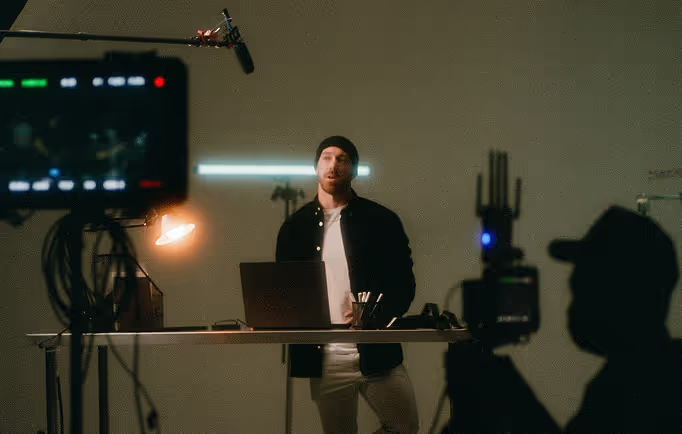How Paid Video Advertising Targets Your Niche Market

Every business has their dream market – that niche consumer segment who so deeply resonates with their brand ideals, who gels with the ethos of their company and who get genuine lasting value from their products and services. But finding, reaching, and targeting that niche? That’s a Herculean task.
Luckily the rise of social media video and streaming services are making this task a hell of a lot more achievable, even for us non-Hercules types (I haven’t even fought a multi-headed serpent monster or anything). That’s because these platforms have the strong viewer reach of traditional television media, combined with digital audience profiling that can allow for much more specific, user-tailored advertising content. In this way, paid video advertising on digital platforms is allowing brands to target their ideal niche markets, and any other audience segments they want, like never before.
Over the next couple of months, we’ll be taking a deeper look at the wide world of paid video advertising and how it affects branding strategies in today’s digital marketplace. Today, let’s get right into the nitty-gritty and break down a couple of the ways paid video advertising helps to target your ideal audience profile.
(P.S. This is not an article on how to become Hercules. My sincerest apologies.)
1) niche targeting abilities allow us to create exactly what the audience wants
The ability to use data to more precisely target your market opens up new opportunities to finely tune your video marketing and get the most bang for your paid advertising buck. The world of digital video uses first-party data (such as viewing habits, patterns of user activity, what kind of device(s) the user has, and profile demographics), and third-party data (app usage from related developers, opt-in marketing data, Google partnered services – sign in to your Google account and check out what Google Ad Settings knows about you here: https://adssettings.google.com/) to determine a user’s demographics and an estimate of their interests.
This allows brands the freedom to truly step up the ad personalisation experience by creating exactly the ads their target audience want to see. Instead of developing video content that must remain somewhat vaguely targeted for a wide audience, paid video advertising can be built from the standpoint of catering to very specific audience identities and needs. The benefits of working with a production house to develop such specific video ads are wide-ranging for both the viewer and the advertiser:
First, niche-targeted ads are more likely to align with the audience’s identity and interests rather than being something they’ll want to skip, which increases watch time and brand recall. Secondly, conversion rates can be improved by creating advertising which specifically targets users on the lip of the conversion funnel, high intent consumers, and those with a compatible spending budget for your products and services. Thirdly, audience targeting allows for more accurate market testing – by sending specific ads only to specific audiences the ‘white noise’ of irrelevant audience metrics is greatly reduced.
2) paid video advertising goes where the people are
For a large segment of the population digital streaming is now the preferred way to view video media, including TV shows, movies, sports, events, and live content. YouTube viewers watch over a billion hours of video every day, with more than 2 billion monthly logged-in users (https://blog.youtube/press/). Netflix has more than 200 million subscribers, with 28 million subscribers joining in 2020 alone. Even pandemic aside, there’s an undeniable increase in video watching from digital video services over traditional media in recent years, meaning more market concentration and more chance of finding your niche audience there.
“But wait,” you may protest, “the kinds of people who use streaming services hate ads, don’t they? Won’t they skip right by them?” Surprisingly the answer is: not as much as you’d think. In a Nielsen Total Audience Report focussing on streaming wars (https://www.nielsen.com/us/en/insights/article/2020/playback-time-which-consumer-attitudes-will-shape-the-streaming-wars/), the factors of most importance to streaming service audiences are: 1) Cost, 2) Ease of use, and 3) Variety and availability of content. In fact, less than half of those surveyed considered ‘Ad-Free’ viewing to be an important factor in using streaming video, and only 52% rated features for skipping ads to be important. A whole eight other attributes were considered more important, including playback quality, loading times, and compatibility across devices. Despite the stereotypical image of the impatient, ad-hating streaming consumer, it turns out that quality, value for money, and reliability are far and away the more important standards for today’s streaming audience.
3) paid video advertising is there for your audience instead of the audience needing to seek you out
Your niche audience also has a niche schedule. Unlike traditional forms of advertising (like print, analogue TV, and any in-person marketing like pop-up markets), social and digital video services are there to serve on viewer demand – when they want, and what they want.
This means that the most effective advertising no longer goes to the highest bidder who can afford the biggest rating primetime slot, or the most visible motorway billboard. Instead, paid video advertising works to reward marketers who know their audience. Once a brand’s audience profile is strongly identified (which, if you’re running a brand, it should already be), data collected from the streaming service or social media is used to show where that audience is and what media they’re probably consuming. With the audience in wait, the only thing left for the brand to do is simply be there with their own video advertising.
And being in the right place for the right audience doesn’t only benefit the advertiser, it serves the convenience-oriented consumer. Unlike posting a video on your website, the viewer doesn’t have to go searching for your ad in the vacuum of the internet (and when’s the last time anyone who didn’t work in advertising searched for an ad?). It’s served directly to them, connected to media they are actively desiring and are already open to.
Start a






